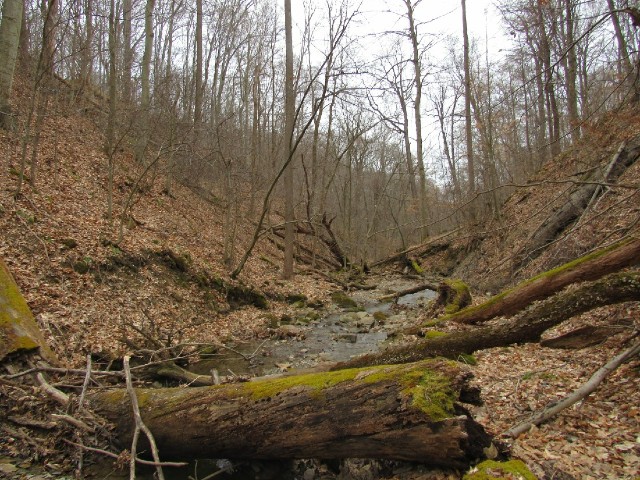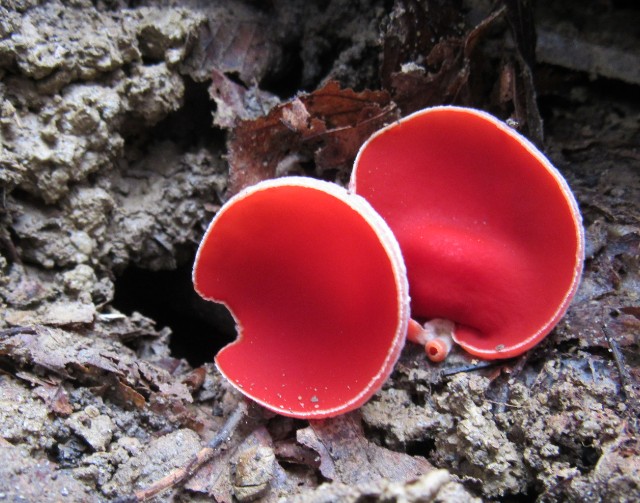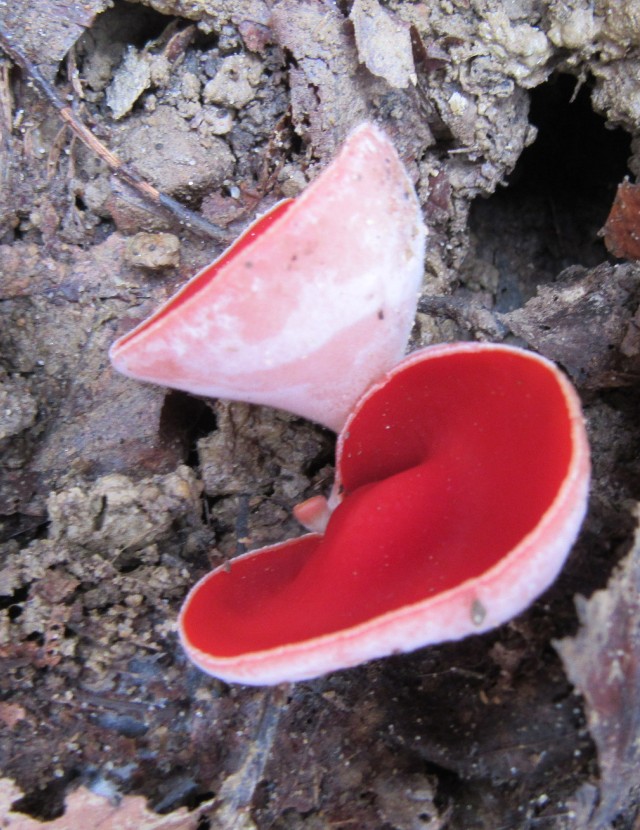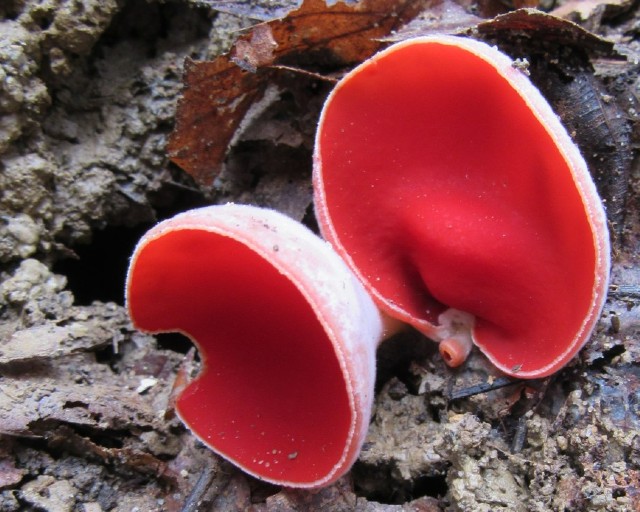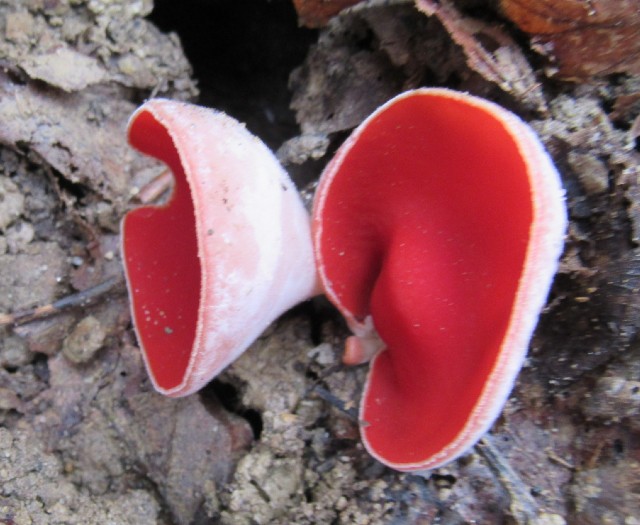While hiking in Hinckley Reservation, a bit of red on the forest floor caught my eye. This fungus is widely distributed in the Northern Hemisphere and has been found in Africa, Asia, Europe, North and South America and Australia.
Scarlet Cup grows on decaying sticks and branches in damp spots in wooded areas, generally buried under leaf litter or in the soil. The cup-shaped fruiting bodies are usually produced during the cooler months of Winter and early Spring.
The brilliant red interior of the cups (from which both the common and scientific names are derived) contrasts with their lighter-colored exterior. The edibility of this fungus is well established, but its small size, tough texture and insubstantial fruitings dissuade most people from collecting it.
Known scientifically as Sarcoscypha coccinea, the specific epithet coccinea is derived from the Latin word meaning “deep red.” The species is commonly known as Scarlet Elf Cup, Scarlet Elf Cap, or Scarlet Cup Fungus. Its cup-shaped fruit measures one to two inches across.
Fungi belong to their own kingdom and get their nutrients and energy from organic matter, rather than photosynthesis like plants. It is often just the fruiting bodies or “mushrooms,” that are visible to us, arising from an unseen network of tiny filaments called “hyphae.”

